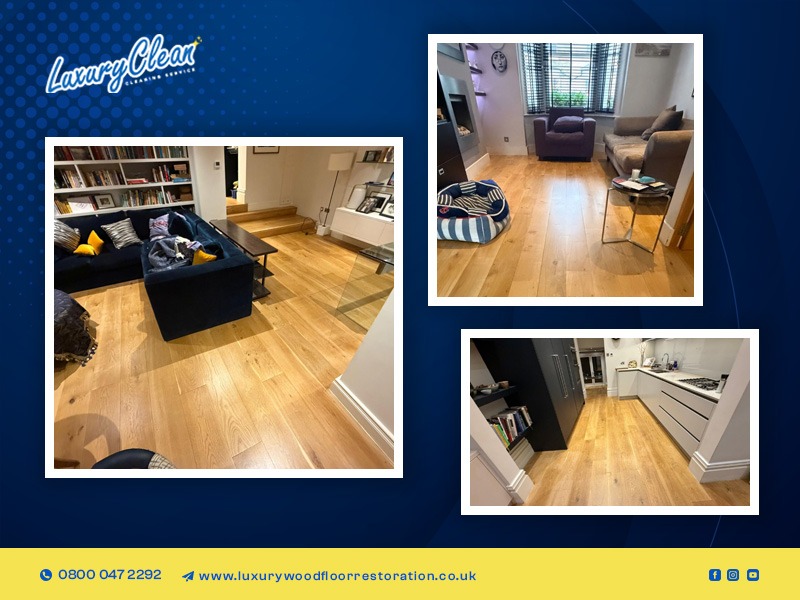London’s Victorian and Georgian floors can look fine while problems grow out of sight. Moisture sneaks in, small cracks widen, and timber starts to soften. The right help finds issues early and fixes them before they spread. If you care about character and long-term value, hardwood restoration in London is the safer choice. Worth saving.
Why period homes hide serious floor problems
Historic floors use old pine boards and original joists (primary support beams) over a subfloor (support layer beneath the boards). Think of it like a garden path: if the ground slips, the slabs shift too. Age, past patch-ups, and natural materials invite moisture to settle where you can’t see it.
London’s damp climate feeds slow rot, woodworm (timber-boring beetle larvae), and creeping damp (moisture absorbed into materials). These stay hidden until stains, soft spots, or a musty smell show up.
How London’s damp climate accelerates floor damage
Humidity, winter condensation, and weak ventilation raise the wood’s moisture level (water inside the timber). As a result, the boards cup (edges curl up), gaps open, and black mould (surface fungus growth) forms under old varnish. Many people underestimate how fast moisture moves through older brick and timber.
One timely check for floor restoration in London can stop that spread before it reaches the subfloor.
The hidden dangers of DIY fixes and cheap sanding
DIY sanding often leaves chatter marks (rippled scratches) and exposes the softer grain. Poor sealing locks moisture in instead of keeping it out, which speeds up decay.
On the flip side, common handyman mistakes include using heavy rental machines in tight rooms, skipping loose-board repairs, and ignoring subfloor rot (decay in the support layer). But what’s the catch? Cheap fixes look tidy for a week, then fail in the places you can’t easily reach.
What professional restoration actually fixes beneath the surface
They start with moisture readings (meter checks), then inspect the subfloor (support layer beneath boards) and joists (main supports). Next come repairs to loose or rotten boards, dust-free sanding (sanders with vacuums attached), colour-matched staining for period tones, and a durable seal (protective finish film).
From what I’ve seen, this is where hardwood restoration in London shifts from looks to strength. Good sealing limits future moisture, repairs stop rot from spreading, and the floor usually lasts many more years.
The heritage value: why saving original floors matters
A buyer steps into a front parlour at 3 p.m., and the warm pattern draws them in. Protecting that authenticity boosts appeal.
Original herringbone and wide Georgian boards carry cultural value (historical significance). When they’re replaced, a home’s character and market pull drop. Surveyors and buyers often favour well-kept period features because they signal careful ownership and fewer hidden risks.
Real before-and-after impact
One Clapham Terrace had a soft patch near the hearth at about 2-3 cm from the skirting. Finding the exact spot kept the repair tight.
The team lifted a few boards, mapped damp under an old rug, repaired two joists, and refinished with a breathable seal. The room looked right again, and the owner slept better knowing the structure was sound.
When homeowners should book a restoration
Your hallway squeaks after 8 p.m., and a dark mark appears by the radiator. Acting now avoids bigger replacement later.
Early signs include creaks, unevenness, dark staining, persistent gaps, or soft spots. With that in mind, a quick survey for floor restoration in London keeps small defects from turning into subfloor failures.
Conclusion
London’s hardwood floors are part of the city’s fabric, not just a surface. Choose hardwood restoration in London to prevent hidden rot, protect history, and hold long-term value. Start with a moisture check, then plan repairs with a specialist. Do it once, do it well.


